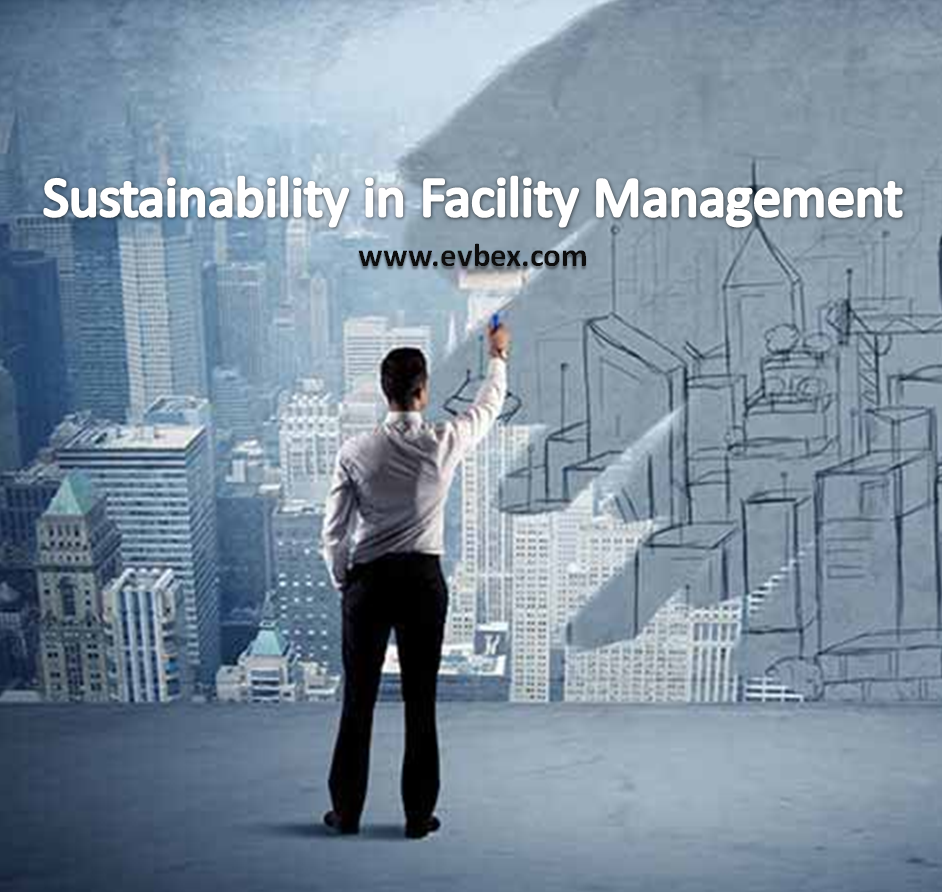Sustainability in facility management
Contents |
[edit] Introduction
Sustainability has become a high priority on organisational agendas. Some organisations have adopted the UN’s ‘Sustainability Development Goals’ and in doing so, created their own net zero goals and objectives.
[edit] Improving climate initiatives
To achieve these goals, organisations are signing up to - or adopting - various sustainability based standards or best practices in their quest to become carbon neutral, conserve water and support a clean environment.
Sustainability in facilities management (FM) in this context can be defined as the avoidance of the depletion of natural resources to maintain an ecological balance.
Whilst organisations do not generally include much on FM in their corporate agendas and published goals and targets, meeting sustainability targets and the annual reporting of progress against these targets certainly features on most companies’ websites and social media channels. Indeed, organisations with properties certified by any of these green organisations will gain positive recognition and economic gains from such certifications.
Three broad principles of sustainability in facility management can be considered as being made up of three pillars — the economy, society and the environment or as a triple bottom line of financial, environmental and social. These principles are also sometimes referred to as profit, people and planet.
Within the context of FM, there is a strong correlation with two of the three pillars, people and plant, and of course there is an indirect link with profit.
[edit] Buildings, teams and communities
Sustainability and its relationship with FM can be broken down into three areas.
[edit] Sustainable buildings: energy and environmental
Considers impacts of the built environment. Advocates sustainable energy sources. Steps are taken to incorporate energy efficient practices, including the use of renewable energy in the design and use of buildings.
Relevant standards include BREEAM, LEED (Leadership in Energy and Environmental Design) and ISO 50001:2018.
[edit] Sustainable teams: people, performance and wellbeing
In this context, employees are considered in terms of their performance and outputs against the buildings they occupy. People are our most important assets and it is therefore imperative that their wellbeing is prioritised accordingly.
The relevant standard includes The WELL Building Standard.
[edit] Sustainable communities: supply chain (including organisational responsibility and accountability considerations)
Social responsibility is also a means of achieving sustainability goals. When an organisation adopts key responsible principles such as accountability and transparency, it can demonstrate that it ensures the long-term sustainability and success of an organisation or system.
Relevant standards include SA8000 and ISO 26000.
[edit] Why is the sustainability journey fragmented?
As organisations strive to become certified and adopt standards to meet their sustainability goals, they may embark on a fragmented journey. Organisations will need to demonstrate ongoing and continued adherence to the requirements of sustainability standards as this will need to be demonstrated through periodic maintenance or surveillance audits.
There are also competing standards organisations and institutions that seek an organisation's business. This has to be considered against other objectives from an economic perspective.
Unlike FM, where there are defined service lines and roles, there are no sustainability-based natural resources, beyond management activity, which can deliver sustainability related tasks in a collective and cohesive manner. This can cause difficulties in maintaining continuity of sustainability certification in between audits.
[edit] Driving the sustainability agenda
The range of sustainability-based procedures and tasks required to maintain the relevant certifications and sustainability-based working practices to achieve the organisation's goals can and should be delivered by FM resources. Traditionally, this is often not the case, but this is an opportunity for FM to step out of the low-cost commodity shadows and show that it can deliver real additional value through ensuring that sustainability goals will be met.
Through revised FM models and structures and the re-designing FM specifications, contracts, measurement frameworks etc. FM can rise from the shadows to finally project itself as a critical resource that demonstrates value but also assists organisations in their efforts meet net zero targets.
[edit] Related articles on Designing Buildings Wiki
Featured articles and news
International Electrician Day, 10 June 2025
Celebrating the role of electrical engineers from André-Marie Amperè, today and for the future.
New guide for clients launched at Houses of Parliament
'There has never been a more important time for clients to step up and ...ask the right questions'
The impact of recycled slate tiles
Innovation across the decades.
EPC changes for existing buildings
Changes and their context as the new RdSAP methodology comes into use from 15 June.
Skills England publishes Sector skills needs assessments
Priority areas relating to the built environment highlighted and described in brief.
BSRIA HVAC Market Watch - May 2025 Edition
Heat Pump Market Outlook: Policy, Performance & Refrigerant Trends for 2025–2028.
Committing to EDI in construction with CIOB
Built Environment professional bodies deepen commitment to EDI with two new signatories: CIAT and CICES.
Government Grenfell progress report at a glance
Line by line recomendation overview, with links to more details.
An engaging and lively review of his professional life.
Sustainable heating for listed buildings
A problem that needs to be approached intelligently.
50th Golden anniversary ECA Edmundson apprentice award
Deadline for entries has been extended to Friday 27 June, so don't miss out!
CIAT at the London Festival of Architecture
Designing for Everyone: Breaking Barriers in Inclusive Architecture.
Mixed reactions to apprenticeship and skills reform 2025
A 'welcome shift' for some and a 'backwards step' for others.
Licensing construction in the UK
As the latest report and proposal to licence builders reaches Parliament.
Building Safety Alliance golden thread guidance
Extensive excel checklist of information with guidance document freely accessible.
Fair Payment Code and other payment initiatives
For fair and late payments, need to work together to add value.
Pre-planning delivery programmes and delay penalties
Proposed for housebuilders in government reform: Speeding Up Build Out.
High street health: converting a building for healthcare uses
The benefits of health centres acting as new anchor sites in the high street.

























